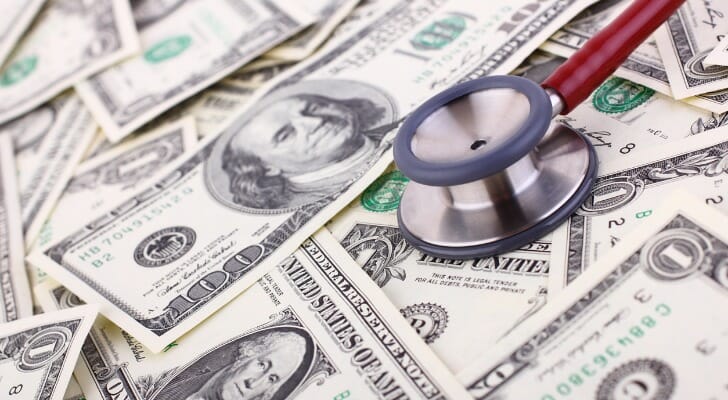Update: The new stimulus package, expected to be signed into law by President Joe Biden shortly, includes an additional $15 million in funding for EIDLs.
The EIDL program pre-dates the coronavirus pandemic; the CARES Act relaxed requirements, expanded eligibility—and authorized $10,000 advances. These changes to the EIDL program are just some of the ways the government is trying to help small businesses struggling during the coronavirus pandemic. Read on to learn more about EIDLs and EIDL program grants (in case the program for advances gets more funding).
What Is the Economic Injury Disaster Loan (EIDL) Program?
The SBA offers EIDLs to eligible small businesses and organizations that have been affected by natural or economic disasters. Due to the COVID-19 global pandemic, eligibility for EIDLs has been extended to any small business with fewer than 500 employees affected by the outbreak. Other eligible organizations include nonprofits, tribal businesses, cooperatives, employee stock ownership plans (ESOPs), sole proprietors, independent contractors – plus agricultural enterprises.
An EIDL loan can range up to $2 million (though some sources have reported that the SBA is unofficially capping loans at $150,000.) With an EIDL, the maturity term can be up to 30 years. Interest rates for these loans is 3.75% for companies and 2.75% for nonprofits. In addition, an EIDL’s principal and interest payments are automatically deferred for one year.
How Is an EIDL Grant Different from an EIDL Loan?
While an EIDL business loan can be for as much as $2 million (usually) and must be repaid, the EIDL advance is for up to $10,000 and completely forgivable, making it a grant. The initial $10 billion provided by the CARES Act for these grants was quickly depleted, and as noted earlier, the additional $10 billion authorized by the interim bill just for these grants is now gone.
When the program for advances was still open, a business didn’t actually need to be approved for an EIDL loan to be eligible to receive an EIDL advance. As long as your business was eligible for the program in general, you could receive an EIDL advance. It took about three days after you apply for it to receive the advance.
If the EIDL advance is forgiven, it becomes a grant and does not need to be repaid. As long as a business uses the funds to cover payroll, paid leave for employees, healthcare costs, operating expenses and anything else related to the COVID-19 pandemic, the advance is forgiven and no repayment is required. The grant is primarily meant to help businesses maintain their workforce.
Having a strong financial plan in place can help to ensure your business survives these difficult times. Talk to a financial advisor today.
What Organizations Are Eligible for an EIDL Grant?

When grants were still available, every company eligible for the EIDL program was eligible to receive an EIDL grant. Companies and organizations must have been in business by Jan. 31, 2020 in order to be eligible. The list of eligible organizations include businesses with less than 300 employees, nonprofits, tribal businesses, cooperatives, employee stock ownership plans (ESOPs), sole proprietors, independent contractors and agricultural enterprises (businesses engaged in the legal production of food and fiber, ranching, raising of livestock, aquaculture and all other farming—and agriculture-related industries).
There are a handful of disqualifying factors for the EIDL program, including if the business:
- Engages in illegal activity
- Earns revenue from sexual depictions or products
- Earns more than one third of its annual revenue from gambling activities
- Is a government entity
- Is a lobbying organization
How to Apply for and Receive an EIDL Grant
Since any company that’s eligible to receive an EIDL loan is eligible for a grant, the process of getting the up to $10,000 advance for your business was relatively straightforward. You simply went to the SBA’s disaster loan assistance page and filled out an application.
Here, when the program was open, you noted what kind of business or organization you are, while ensuring that you are not disqualified for any of the reasons above. After that, you’d enter some basic information about your business, such as its address, the names of owners, annual revenue, number of employees and operating expenses.
On the final page of the application, you selected the option for receiving an advance of up to $10,000. You also had to enter your bank account information so that the funds could be direct deposited right to your account. (To spread the advances as far and wide as possible, the SBA restricted advances to $1,000 per employee, up to $10,000 – which meant you had to have at least 10 employees to get the full amount.)
The SBA estimated that the application process takes 18 to 21 days, with another two to five day for loan disbursement. However, EIDL advances were required by law to reach applicants within three days of applying.
Bottom Line

When the EIDL program for grants was open, accessing one for up to $10,000 was a relatively easy task. As long as you’re eligible to receive an EIDL loan, you could submit an application and get your advance within a few days. The application was short and straightforward and eligibility requirements were fairly simple. This grant program is one of several provisions in the CARES Act designed to help small businesses and organizations handle the economic fallout from the coronavirus outbreak, and with its renewal at the end of 2020, it should be available for use as we get further into the Coronavirus crisis.
Tips for Small Business Planning
- A financial advisor can help you keep your business’ finances in order during tumultuous times. Based on the needs of you, your family and your business, SmartAsset’s free tool can match you with financial advisors in your area in just five minutes. Get started now.
- There are many resources available for small businesses, including the Paycheck Protection Program (PPP), the Express Bridge Loan Pilot Program and the SBA 7(a) Loan program. Make sure you take advantage of everything that your business might qualify for.
Photo credit: ©iStock.com/AlenaPaulus, ©iStock.com/Aslan Alphan, ©iStock.com/wutwhanfoto
